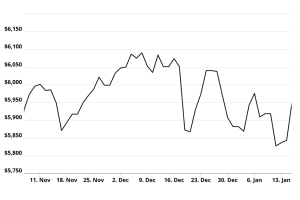
For everyone looking for a chance to buy used vehicles anytime soon, this news is just for you. According to a report by the Manheim Used Vehicle Value Index (MUVVI), wholesale used vehicle prices declined in June. Adjusted values declined 0.6% month-over-month for the second consecutive month, and non-adjusted prices went down by 2.2%. Despite disruptions, Manheim noted decelerating price declines and strong buyer demand, with sales conversion above the past three years.
Here’s everything you need to know about the declining used car prices we saw in June.
Manheim Market Report
Manheim Market Report’s June values saw a weekly decline above the longer-term averages. Sharper declines are also expected to continue this July. According to the data of the Three-Year-Old Index, a 1.5% drop is likely to be seen over the next four weeks, surpassing the average decline seen in the 2015 to 2019 period.
Daily MMR Retention averaged 97.8%, indicating market prices stayed below MMR values. Sales conversion in June increased 57.4%, which is higher than the 51.4% average in 2022.
Moreover, June also saw a decline in major market segments. Pickups outperformed and declined by 8.3%, mid-sized cars by 11% and SUVs by 9.3%, with compact car prices sinking by 12%.
Notably, EV values fell 16.6% year-over-year (YOY) and 6.5% from May, while non-EVs were down 9.5% YOY and 0.3% month-over-month.
June Prices Slid Down Fast
In June, retail used-vehicle sales dropped 5% from May but rose 3% YOY. Average retail listing prices fell 1%. Retail used days’ supply increased to 48 days, up from 46 in May but down from 49 last June. Sales of new cars declined 3.4% YOY.
June also showed combined sales to large rental, commercial, and government fleets fell 8.7% YOY. New retail sales declined 0.4%, showing a retail SAAR of 12.7 million. This showed a 0.2 million decline from last year and a 13.0 million decrease from May’s data.
A Mixed Bag
The Conference Board Consumer Confidence Index dropped 0.9%, with a sharper decline in futures outlooks, marking an 8.8% YOY decrease. Vehicle purchase plans fell from May but were higher than last June. According to the University of Michigan’s data, the index declined 1.3% from May but increased 6.2% YOY.
Inflation expectations for one year dropped to 3.0%, the lowest in three months. Morning Consult’s sentiment index rose 0.6% in June, and gas prices decreased 1.5% from May to $3.49 per gallon on June 30. These prices were down 1% YOY but up 1.2% over the last week.
Decreased Prices: Good or Bad?
EV prices also dropped sharply as options increased and some consumers appear to continue to hesitate to go electric. Used EV prices fell 16.6% over the past year. Price cuts have certainly played a role in this trend, but broader supply and demand fundamentals appear to remain weak across the board in the EV space.
After supply chain issues during the pandemic, vehicle inventories bounced back, prompting dealers to increase incentives on new cars. The shift caused used-vehicle prices to plummet, with pickups down 8.3%, SUVs 9.3% and sedans 11%.
According to Edmund’s data, Q4 2023’s average used car transaction prices fell $28,371, down from 2022’s numbers. High demand had previously prevented depreciation, but ongoing shortages from the pandemic limited new car production, resulting in fewer used cars available. This scarcity is expected to maintain higher values for used vehicles, as there’s no way to increase supply.
On the date of publication, Chris MacDonald did not hold (either directly or indirectly) any positions in the securities mentioned in this article. The opinions expressed in this article are those of the writer, subject to the InvestorPlace.com Publishing Guidelines.
On the date of publication, the responsible editor did not have (either directly or indirectly) any positions in the securities mentioned in this article.




